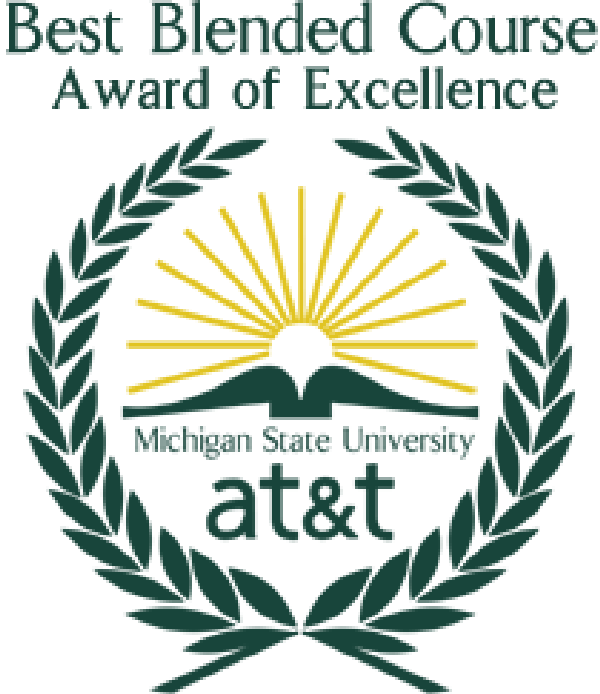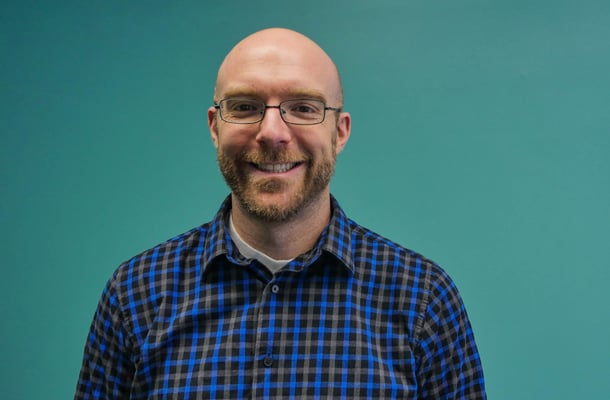LB145 is a STEM gateway course where students learn the fundamental content and concepts involved in cell and molecular biology (broadly). It is a five credit course that includes a lab component. As the lead instructor, White is responsible for all of the lecture and lab course content, as well as supervising two graduate teaching assistants and a dozen undergraduate learning assistants, all of whom were involved in facilitating the lab portion of the course. The class meets for two 80-minute lecture sessions per week, along with two 110-minute lab sessions. Over the past two years, White developed and implemented a "flipped-course" pedagogy in LB145. In this model, students are responsible for watching an instructional "lecture video" at home before class, and complete homework based on the video content. Upon arriving to class, students are given a quiz to test whether or not they had engaged in adequate class preparation. Following the quiz, students receive a short 5-7 minute "recap lecture." Students are then given challenging problem sets to work on (both individually and in groups) for the remainder of the class session. In this model, 50- 60 minutes in each class session is dedicated to student problem solving, in a student-centered classroom format. During problem solving time, White interacts with students one-on-one to answer questions and help them tackle the more challenging questions in the assigned problem sets.
In order to implement this pedagogical model, I recorded, edited and produced 15 video lectures where I present the majority of the course's key concepts and processes. These videos are an integral part of my instructional strategy. Each video is between 10 and 25 minutes in length, and often incorporate other helpful animations or whiteboard tutorials. These video lectures can be found on my course homepage, which can be accessed with this tiny url: http://tiny.cc/whitevids. Having students engage in "content acquisition" outside of class allows me to turn the classroom into a teacher-supported problem-solving space.
One of the motivating factors for developing a flipped version of LB145 was to create an inclusive learning environment. Literature suggests that affluent students who have study support networks tend to do better than students who do not have study support networks (e.g., minorities; Treisman 1992). The flipped classroom is thought to help bridge this gap while facilitating learning at higher levels of Bloom’s Taxonomy (Brame 2013). Furthermore, in a flipped classroom, students practice working through course material in class with one or more of their peers, and therefore have immediate access to the course instructor should they need additional clarification or explanation of course content.
This approach is considered to “shrink the divide” between instructor and student, making both the course content and the faculty-person more accessible to students (Bergmann and Sams 2012; Houston and Lin 2012; Roehl et al 2013). Another motivating factor for redesigning this introductory course was to increase the amount of student-work happening in class. This has several benefits including: (i) encouraging and facilitating the formation of student study groups, (ii) turning students into active learners while in class, rather than remaining passive listeners, and (iii) being able to challenge students with difficulty problems while supporting them (in class) as they work.
Section References
- Bergmann J and Sams A (2012) Flip your classroom: reach every student in every class every day. International Society for Technology in Education.
- Brame CJ (2013) Flipping the classroom. Vanderbilt University, Center for Teaching.
- Houston M and Lin L (2012) Humanizing the classroom by flipping the homework versus lecture equation. Society for information technology & teacher education international conference. Vol 2012. No1.
- Roehl A, Reddy SL and Shannon GJ (2013) The flipped classroom: an opportunity to engage millennial students through active learning strategies. Journal of Family & Consumer Science 105: 44-49.
- Treisman U (1992) Studying students studying calculus: A look at the lives of minority mathematics students in college. College Mathematics Journal 5: 362-372.
Technologies Used
- Multimedia creation tools
Team Members
Peter White - Course Instructor

